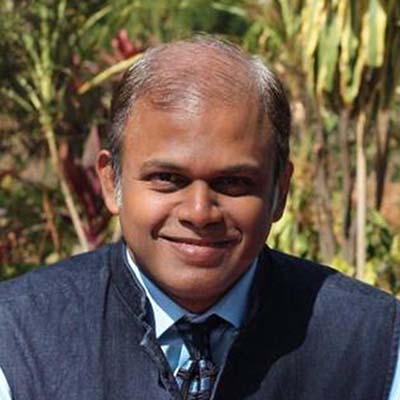

- Amit Baraskar
- Vice President & Head, Treasury, Thomas Cook India

- Dr Ronald Wong
- Academic and payments technology expert

- Marianna Polykrati
- Group Treasurer, Avramar
How Treasurers Can Find Enough Hours in the Day
The list of treasurers’ roles and responsibilities is expanding at pace – and they are increasingly being asked to achieve more with less. Along with tight deadlines, it is clear the job is more demanding today than ever before. Here, TMI Editor Jane Cooper examines how treasurers can better manage that most precious of commodities: time.
According to Parkinson’s Law, tasks take as long as the time available. Or, as one offshoot to the rule states: if you leave something to the last minute, it will take only a minute. But what happens when there is simply too much that needs to be done?
This is a feeling that many treasurers are familiar with, and the nature of their role can exacerbate this state of affairs. If they don’t manage their time effectively, they run the risk of burnout, which in turn could lead to poor decision-making and potentially catastrophic consequences for their organisations.
The treasurers that TMI spoke to said that time management is a challenge due to the complexities of their role. Marianna Polykrati, Group Treasurer, Avramar, for example, highlights how complex the role is because the treasurer is involved in almost all aspects of a company’s business. “Our presence is usually needed across many functions, handling different department requests and from the initial planning of several projects such as M&A, sustainability, and pulling us into various meetings,” she says.
It can be difficult to manage one’s time if there is no visibility as to what is ahead. “I might be pulled into meetings on strategic projects like M&A discussions, while simultaneously dealing with urgent issues such as a sudden liquidity shortfall due to market volatility”, Polykrati adds.
This is an issue that Amit Baraskar, Vice President and Head - Treasury, Thomas Cook (India), also grapples with. “One of the obvious time management challenges while working in a multi-country environment is not having any control over how many issues can crop up at the same time,” he admits.
Managing expectations
Juggling the competing pressures, while also operating in a high-paced environment can make it difficult to switch off. This always-on style of working, however, can take a toll and ultimately be counterproductive. Polykrati comments that “the need to monitor global markets, and the constant connectivity of technology, makes it hard to switch off, especially when boundaries between work and personal time are blurred”.
And Baraskar has a warning for those who may be burning the candle at both ends. Working across multiple time zones, with various cut-off times for payments, for example, can be “degenerative for the body as well as the mind”. Many treasurers, he adds, are forcing themselves to work in a “rat race” that ultimately damages their productivity and potentially shortens their working lives.
Added to this, there are pressures linked to the technology that has made remote working possible. Baraskar describes the “double-edged sword” that comes with video conferencing; working flexibly can free up time for personal endeavours, but it can also mean the job overpowers the work-life balance. While working from home helps with keeping commitments outside one’s professional life, there are greater expectations of when treasurers are available to work.
The pressure to be visible
One consequence of working from home and using video conferencing, says Dr Ronald Wong, an academic and payments technology expert, is that “the day never stops”. Wong, who has been working remotely in the US for 15 years – long before it became the norm – has experienced the pressures of time management first hand. He was a senior payments manager for a global bank and, more recently, a product leader for a fintech. He says due to the fact that his teams were globally distributed, there was more slippage in when the workday started and ended.
Wong is also an academic with a doctorate in organisational behaviour whose thesis focused on employee perceptions of video conferencing. He questioned whether the activity leads to burnout, or ‘Zoom fatigue’. His research found that, contrary to expectations, there was a negative correlation between the time spent video conferencing and virtual burnout. “Based on my thesis, the video conferencing – the technology itself – in general does not lead to exhaustion or fatigue. The relationship between video conferencing and burnout is actually inverted; it helps slightly”.
Tools such as video conferencing have brought many benefits to time management, but there are downsides to the technology. One consequence is that it is now more difficult to multitask. Previously, with conference calls, one could dial in, switch on mute, and do something else; it was possible to be present without participating. Now, with tools such as Zoom, there is social pressure to be visible and “there is the stress of people looking at you while you are multitasking”.
Finding order amid the chaos
There are myriad books, articles and online tips that discuss how we can manage time more effectively. Rather than bemoaning the inability to multitask while video conferencing, one piece of advice is to focus on doing one activity at a time.
James Clear, the author of Atomic Habits, describes this kind of multitasking as “half work”. In a blog he gives three tips for managing time more effectively, and the first is to avoid half work at all costs.
He writes: “It’s stupidly easy to split our attention between what we should be doing and what society bombards us with.” This could include monitoring emails or scrolling through social media while working on another task. He recommends blocking out time to focus on one project and eliminate everything else.
Polykrati already has baked this into her routine. She sets aside dedicated blocks of time for strategic work.
“I carve out the first two hours of my day for key tasks such as reviewing financial reports, while scheduling meetings in specific blocks so they don’t consume my entire day,” she says. Polykrati adds that she also devotes a specific time to reply to emails. She also opts to put the ‘do not disturb’, or even the ‘out of office’, sign on her Teams account to avoid constantly being disturbed.
Clear’s second piece of time-management advice is doing the most important task first. He argues that “disorder and chaos tend to increase as your day goes on”. And, so his reasoning goes, “you’ll never have a day when you didn’t get something important done”.
And third, in line with his main argument in Atomic Habits – where the cumulative impact of many good habits can make a big difference – Clear recommends sticking to the schedule. This is more important than a deadline. For example, rather than a deadline that targets running a certain distance by a certain time, it is better to create a habit and schedule regular running sessions. If life isn’t going according to plan in the week, Clear advocates reducing the scope but sticking to the schedule; just do less that day, but still go running.
Enter the matrix
There are other tools that treasurers can rely on to assist with time management, such as dividing tasks into the four Ds (do, decide, delegate and delete), or putting them into a matrix of four quadrants that prioritises tasks. One such example is the Covey time management matrix. This was developed by Steven Covey, author of The 7 Habits of Highly Effective People, that divides items on the to-do list according to their level of importance and urgency.
Baraskar finds this kind of matrix useful for focusing on matters that are important and critical when they are not yet urgent. And for matters that are not important, Baraskar recommends three options: delegate, automate or outsource them.
For tasks that need to be done, but seem insurmountable, the Pomodoro Technique has proved useful for getting over the initial inertia before tackling a monster task. Named after a tomato-shaped kitchen timer, the process is attributed to Francesco Cirillo who in the late Eighties used a method of 25 minutes ‘on’ and five minutes ‘off’ to get through his studies.
Limiting availability
For treasurers, however, it may not be possible to block off time in this manner due to others making demands on their time and making requests that may or may not fall within their remit. This is where some basic boundary management is necessary. Or, as Baraskar says: “Being helpful is good, but one should know when to stop.”
One easy way to enforce a boundary is to simply be unavailable. Wong recommends blocking out sections of the calendar and being firm when others try to encroach on that time. “Being on video calls creates accessibility but it is making people overload their schedules – that is becoming a huge problem,” points out Wong.
Wong also recommends limiting the time spent on video conferencing to two or three hours a day. He also suggests that employees should mostly be attending meetings where they are active participants.
Baraskar also adds that having a good mentor can assist greatly with time management. He acknowledges it is common for treasury professionals to become bogged down with masses of work and be directionless as a result.
He recommends creating a good medium-term plan that is broken down into smaller steps, including milestones. “Constantly reviewing this plan and making ongoing adjustments is the key to staying focused,” Baraskar says.
And having a plan can also prevent Parkinson’s Law becoming a reality– where work stretches to fill the time available. Or, worse still, leaving everything to the last minute, and hoping they will only take a minute.


